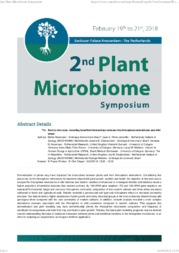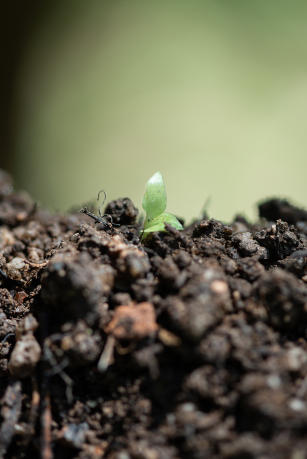Back to the roots: revealing beneficial interactions between the rhizosphere microbiome and wild wheat.
Back to the roots: revealing beneficial interactions between the rhizosphere microbiome and wild wheat.
Author(s): ROSSMANN, M.; PÉREZ-JARAMILLO, J. E.; CHIARAMONTE, J. B.; KAVAMURA, V. N.; DUMACK, K.; FIORE-DONNO, A. M.; MENDES, L. W.; BONKOWSKI, M.; MAUCHLINE, T.; RAAIJMAKERS, J. M.; MENDES, R.
Summary: Domestication of plants may have impacted the interactions between plants and their rhizosphere microbiome. Considering that plants rely on the rhizosphere microbiome for functions related with plant growth, nutrition and health, the objective of this work was to analyse the rhizosphere microbiome of wild relatives and modern varieties of wheat and to investigate whether wild relatives recruit a higher proportion of beneficial microbes than modern cultivars. By 16S-rRNA gene amplicon, ITS and 18SrRNA gene amplicon, we assessed the bacterial, fungal and cercozoa rhizosphere community composition of five modern cultivars and three wheat ancestors cultivated in forest and agricultural soils. Results revealed a pronounced soil type and rhizosphere effect on microbial community structure. Our data showed a higher abundance of plant growth promoting microbial groups at the core community shared among wild genotypes when compared with the core community of modern cultivars. In addition, network analysis revealed a more complex microbiome structure associated with the rhizosphere of wild accessions compared to modern cultivars. This suggests that domestication and plant breeding may have unintentionally altered the rhizosphere microbiome composition and frequency of beneficial microorganisms and traits that may contribute to plant growth. Thereby, the future plant breeding programs may be directed toward understanding the basis of molecular interaction between plants and beneficial members of the rhizosphere microbiome, in an effort for reducing our dependence on inorganic fertilizer application.
Publication year: 2018
Types of publication: Abstract in annals or event proceedings
Unit: Embrapa Environment
Keywords: Microbiome, Rhizosphere, Rizosfera, Trigo, Wheat, Wild wheat
Related content
Observation
Some of Embrapa's publications are published as ePub files. To read them, use or download one of the following free software options to your computer or mobile device. Android: Google Play Books; IOS: iBooks; Windows and Linux: Calibre.
Access other publications
Access the Agricultural Research Database (BDPA) to consult Embrapa's full library collection and records.
Visit Embrapa Bookstore to purchase books and other publications sold by Embrapa.


